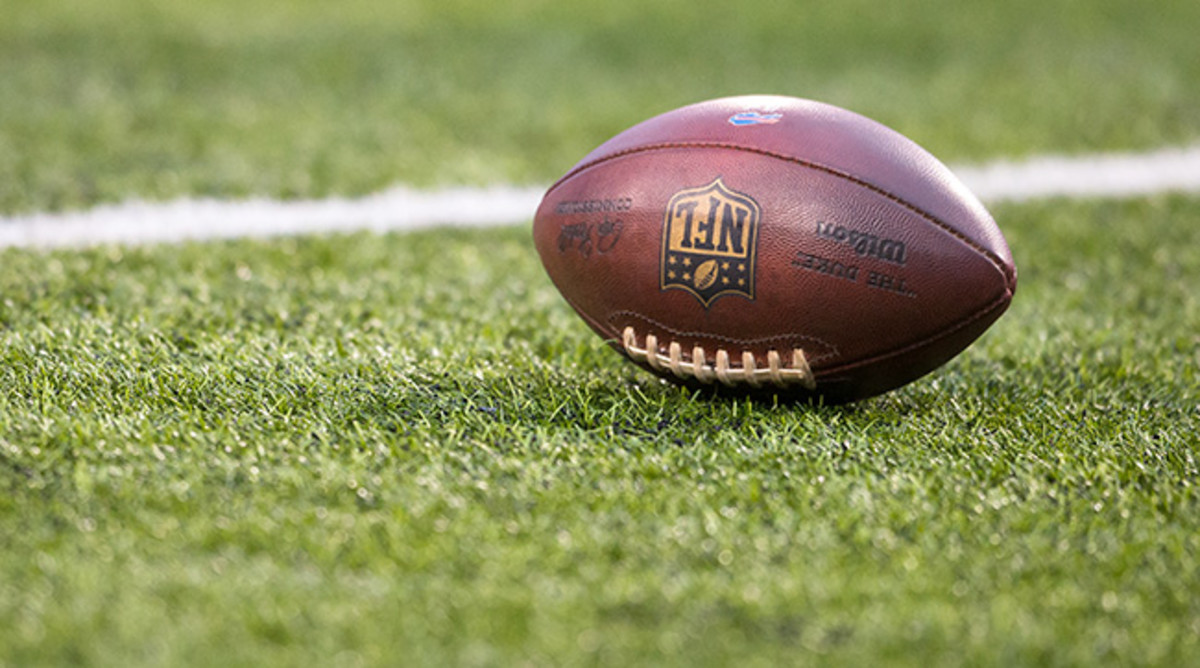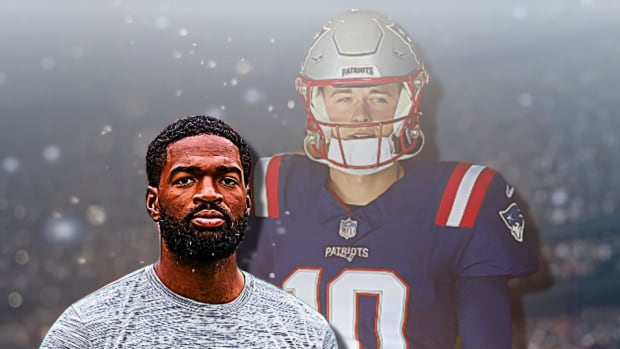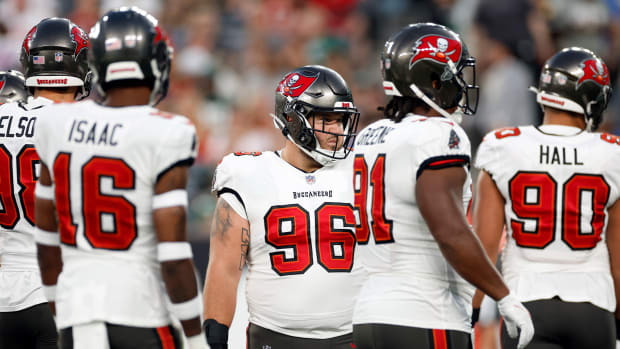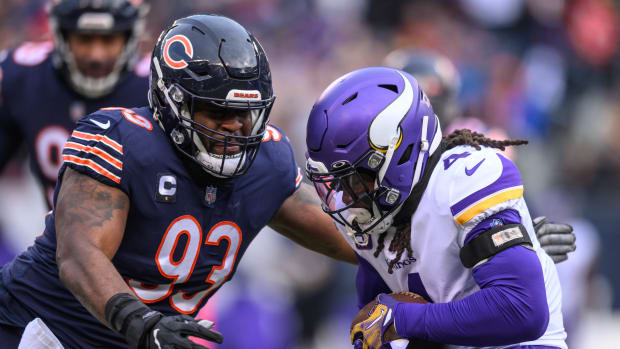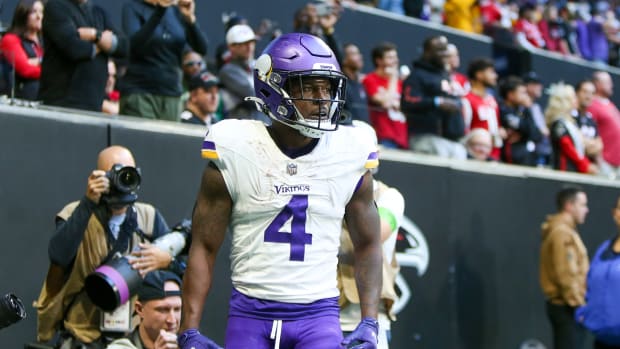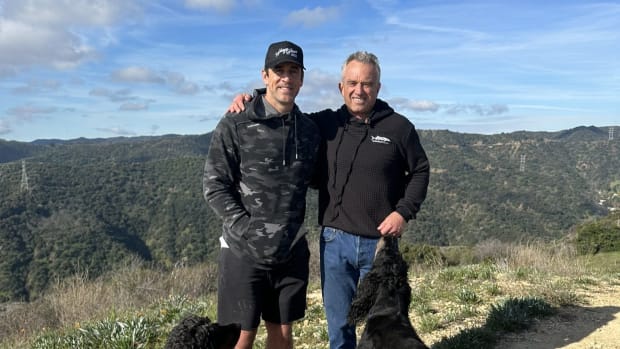The NFL, the Grant Money, and the Business of Concussion Research
CHARLOTTE, N.C. — The topic of health and safety was scheduled to occupy one hour of the agenda for Tuesday’s quarterly NFL meeting. But while league officials and club owners began arriving at The Ballantyne Hotel in the city’s outskirts on Monday, it was already dominating public conversation.
A 91-page Congressional report, first released yesterday in an ESPN article, rebuked the NFL’s top health and safety officials. The ripple effect was far-reaching. In Washington, D.C., U.S. Representative Frank Pallone (D-N.J.), criticized the NFL for meddling with scientific research into the link between football and brain disease. In Seattle, Richard Ellenbogen, pediatric neurosurgeon and co-chair of the NFL’s Head, Neck and Spine committee, likened the questioning of his professional integrity to “McCarthyism.” Here in Charlotte, Roger Goodell will face more questions on the game’s most critical issue.
* * *
Four years ago, the NFL pledged $30 million in “unrestricted funding” for the National Institutes of Health to research head trauma and the link to long-term neurodegenerative issues. But the report, completed by Democratic members of the House Committee on Energy and Commerce, concluded that the NFL improperly influenced how that money would be spent. The league has long been trying to outrun its past mishandlings of head trauma, but now the U.S. government is saying that the NFL is bungling the present, too.
“This is not good,” Pallone, the ranking Democrat on the committee told The MMQB from his office in Washington, D.C. “Obviously the NFL was trying to influence what was supposed to be an impartial look into a very serious investigation by the NIH. That’s not what we do with these grants. It’s imperative that these grants enable the research to be totally impartial. That is the only way you get the truth.”
NIH planned to award $16 million of the NFL money to Robert Stern, the director of clinical research at Boston University’s CTE center, who proposed a longitudinal study tracking hundreds of former NFL and college players over a seven-year period. He hopes to be able to find a way to diagnose CTE in the living, something that cannot currently be done. When ESPN reported in December that the NFL had backed out of funding Stern, who has been critical of the league and backed the players’ opposition of the NFL’s settlement of the concussion lawsuit, the House Committee launched an investigation.
“The money was not directed away from the long-term consequences of playing contact sports,” Ellenbogen says. “This is just fighting about whose piece of the pie belongs to who.”
During that investigation, Goodell responded to five multi-part questions about the NFL’s health and safety practices in a pair of letters dated April 25 and May 20, obtained by The MMQB.
Question No. 1: Please provide an explanation of why the NFL believed it was appropriate to initially weigh in on the grant review and selection process at NIH.
Goodell replied that in June 2015, the NFL learned that researchers at BU expected to receive a substantial grant from NIH through the program established with the NFL. Goodell wrote that news caused representatives of the NFL, including members of the NFL’s Head, Neck and Spine Committee, “concern, because, first and foremost, the proposed study was not to be a prospective longitudinal study as outlined in the Research Plan signed by representatives of NIH, FNIH, and the NFL in July 2014.
“Moreover, upon review there were questions about whether the process leading to the selection of the Boston University group had complied with NIH conflict of interest guidelines.” Goodell wrote that four members of the NIH grant review committee, including its chairperson, had collaborated with BU researchers in the previous two years, and the NFL still does not know if they recused themselves from the review. “Finally,” he added, “the Boston University group was led by a researcher, Dr. Robert Stern, who had publicly expressed conclusions about the issues to be studied. … The apparent pre-judgment by Dr. Stern raised serious questions about whether the results of the proposed study would be objective and whether they would be so perceived by the scientific community.” Jeff Miller, the NFL’s senior VP of health and safety policy, made the decision to bring their concerns to NIH and the Foundation for the National Institutes of Health (FNIH).
Question No. 2: Please provide an explanation of why the NFL failed to commit to funding Dr. Stern’s study.
Goodell pointed to the Dec. 22, 2015 statement by the FNIH that the FNIH/NIH made the final decision on funding. “Neither the NFL HNS Committee nor NFL executives were involved in making that decision,” he wrote. After the NIH committed its own money to the project instead, the NFL offered $2 million toward the first year of the BU study, but NIH declined the offer.
* * *

Robert Stern of Boston University testified before the Senate Special Committee on Aging in 2014.
Win McNamee/Getty Images
In a public statement yesterday, the NFL admitted it had reservations about the BU study but believed to have raised them through the proper channels. The House Committee, however, concluded that the NFL overstepped its reach as part of a “long-standing pattern” to influence concussion science to its benefit. Its report includes e-mails from Elliot Pellman, the former head of the controversial and now-defunct Mild Traumatic Brain Injury Committee and current NFL administrator, to Walter Koroshetz, director of the NIH’s National Institute of Neurological Disorders and Stroke, questioning the BU group’s “ability to be unbiased and collaborative”; and Betsy Nabel, the NFL’s Chief Medical Officer, who sent Koroshetz Stern’s affidavit in the 2014 class action suit against the NFL.
The Congressional report singled out Ellenbogen. It cited him as one of the NFL representatives on a June 2015 conference call with members of the NIH and FNIH who questioned NIH’s peer review process and the majority of the NFL money going to BU studies. (Another $6 million of the NFL’s $30 million had previously been awarded to Ann McKee, the neuropathologist who directs BU’s brain bank.) Koroshetz also said Ellenbogen, who was an advisor to the runner-up project in the bid for $16 million grant, called him separately and said he could not recommend the NFL fund the BU project because of Stern’s conflict of interest and bias in the grant review process.
For the scientific research community—subject to the same financial and political pressures of any other big business—the NFL grant money is a jackpot.
Ellenbogen, reached by phone Monday night, disputed this version of events and said that the House Committee did not contact him during its investigation. He said he had only an advisory role in the runner-up project and would not benefit from its funding, but he did advocate that study to Koroshetz. He believed the runner-up project, proposed by UNC’s Kevin Guskiewicz and Mike McCrea from the Medical College of Wisconsin, would be vital in crystallizing the long-term risks of contact sports by studying neurological outcomes over time of a cross-section of athletes of all ages.
“I don’t want to engage in this form of McCarthyism where if you don’t support me, you’re going to out me,” Ellenbogen said. “I told Walter, ‘Six years in, we still don’t have a longitudinal study to understand the long-term effects of traumatic brain injury.’ That’s what we fought for. This idea you can have either the CTE study or the longitudinal study is not correct. My understanding in talking to Walter is that he was going to ask for both to be funded because they are important.”
Ellenbogen added, “The [NFL] money was directed. But not directed away from the long-term consequences of playing contact sports. Directed toward that. This is just fighting about whose piece of the pie belongs to who.”
All parties involved can agree on that. Where science and football intersect, so does money. The NFL’s business interests align with demonstrating a commitment to health and safety so future generations of parents are comfortable letting their kids play football. In turn, the funds they’ve donated to researching the risks of the game have created a competitive marketplace for concussion researchers seeking funds. In other words, for the scientific research community—subject to the same financial and political pressures of any other big business—the NFL grant money is a jackpot.
* * *
The NFL's big mistake was in labeling the funding “unrestricted.” Even if they simply wanted to direct the money toward research the league’s medical advisors thought was most needed, or preferred it to be spread out over a bunch of different groups to tap into different perspectives, they gave the impression those decisions were out of their hands. Now, getting blasted in a Congressional report only serves to further erode an already thin player and public trust in the arena of health and safety.
The frustrating part is that all parties lose something. NIH turned down the NFL’s late commitment of $2 million toward the first year of Stern’s study. The proposed Guskiewicz/McCrea project doesn’t have the funding to get off the ground. The NFL’s remaining $16 million has not yet been committed to new research. And the future of the NFL’s partnership with NIH to fund needed studies on head trauma is uncertain. That concern was raised by Wayne Gordon, a neuropsychologist at Mount Sinai who previously received $6 million from the NFL’s $30 million gift through NIH to study the link between traumatic brain injury and CTE.
“I was grateful that the NFL gave the money, because without their giving money we would know less than we know now,” Gordon said in a phone conversation earlier this spring. “I would like them to give more money, but the relationship is so bungled, I’m not sure if that is possible.”
The planned hour-long health and safety agenda item, according to John York, chairman of the NFL Health & Safety Committee, was to propose “a very large budget of money” for research including dissecting the biomechanics of hits via video and helmet sensors that measure both linear and rotational forces. Any future money is sure to be heavily scrutinized now, however.
A few of the owners arriving Monday night admitted they hadn’t yet had a chance to parse through the 91-page Congressional report. Throughout the day, the buzz in the Ballantyne lobby was about future Super Bowl host sites and the Raiders’ Vegas plans. But no topic is more important to the league’s future than health and safety.
































